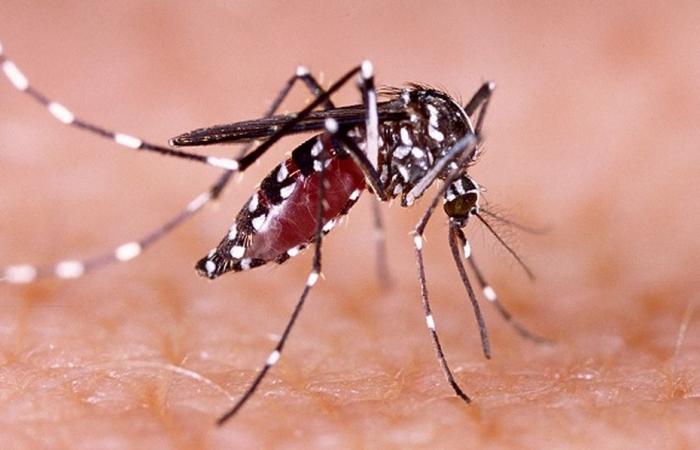While COP29 opened on Monday, November 18 in Baku (Azerbaijan), an American study claims that climate change is responsible for nearly a fifth of dengue cases in the world. The cause is the rise in temperatures which would influence the spread of this virus.
Published on November 21, 2024 at 5:16 p.m.,
updated November 21, 2024 at 5:18 p.m.
A viral disease, dengue is transmitted by bites from infected tiger mosquitoes. Its symptoms are characterized by high fevers and body aches, but while the patient generally develops mild forms, serious and even fatal forms exist.
“Dengue is a very good disease to study, because it is very sensitive to climate”Erin Mordecai, an ecologist specializing in infectious diseases at Stanford University, told AFP. Indeed, if dengue fever is already endemic in more than 130 countries around the world, with rising temperatures, the mosquito vectors are spreading beyond the tropical and subtropical zones where they were previously confined.
While a new dengue epidemic is currently hitting Guadeloupe, an American study highlights the incidence of dengue and climatic variations in 21 countries in Asia and the Americas. Researchers then estimated that approximately 19% of current dengue cases worldwide “are attributable to global warming”summarized Erin Mordecai, lead author of the study.
Additionally, temperatures between 20 and 29°C are most conducive to the spread of the disease. In total, according to scientists at Stanford University, at least 257 million people currently live in areas where global warming could double the incidence of dengue over the next 25 years.
According to the World Health Organization, during the first eight months of 2024, nearly 13 million cases of dengue fever were counted, almost double the record recorded for all of 2023.
Questioned on this subject, Anna-Bella Failloux, professor of medical entomology at the Pasteur Institute, mentions an increase in “indigenous cases” particularly in mainland France. “In 2010, we recorded the first case of autochthonous dengue, that is to say linked to a mosquito present in the metropolitan territory. Previously, the cases were linked to people who returned from trips where they had been bitten by an infected mosquito”continues the scientist.
Furthermore, if “80 % of people who contract the disease are asymptomatic”the tiger mosquito is now present in “78 departments” in France, says Anna-Bella Failloux. As a result, the number of patients is gradually increasing in the territory with “64 cases recorded in 2023 and 68 in 2024”.
But, if global warming could have an effect on the spread of the disease in temperate zones, in zones subject to a tropical climate, the problem is entirely different. “The virus and the tiger mosquito are already here. Today, to fight dengue fever, we are working on biological control”explains the professor at the Pasteur Institute.
Indeed, to combat this disease, one of the promising approaches consists of introducing into nature mosquitoes infected with a bacteria blocking the insect’s ability to transmit the virus. “This system has been implemented in New Caledonia since 2019, but also in Reunion Island. Furthermore, in Polynesia, the choice was made to introduce sterile mosquitoes in order to reduce their population”testifies Anna-Bella Failloux.
Processes which seem to be bearing fruit, but which nevertheless remain marginal. “These mosquito factories are expensive and today only certain territories have been able to invest in this area”argues the professor of medical entomology. In addition, certain new sources of contamination cannot currently count on this type of solution, “if the legislation remains more flexible in overseas territories, such processes are prohibited in Europe where these mosquitoes are considered genetically modified organisms”explains Anna-Bella Failloux.
Dengue fever has not yet completed its expansion around the globe, a phenomenon facilitated by climate change, the globalization of trade and travel as well as the advance of urbanization which favor the spread of tiger mosquitoes.






